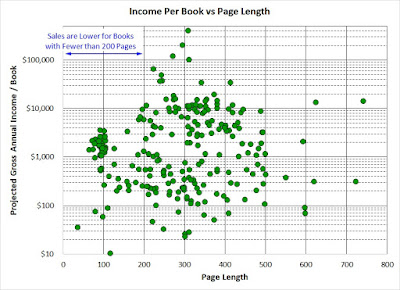For full length novels (books with 200 pages or more), the length of the book had no apparent bearing on its sales success. Shorter novels or novellas (books with less than 200 pages), on the other hand, did tend to generate fewer sales.
This trend should not be surprising. Novellas are often used as promotional tools by authors and are usually priced accordingly. The market has only so much appetite for shorter works of this kind. With regard to full length novels, traditional publishers have often shied away from publishing longer works because of the added printing costs. For indie authors, most of whom will rely heavily on eBook sales, the printing costs for the paperback are a secondary concern. If the story needs to run a little longer, as fantasy books with their world building often do, there is no reason to shortchange the reader.
Books with higher reading levels (longer, more complex sentence structures) can obviously do well enough. But authors should consider their audience and invest the necessary time into editing their novels if they want their audience to embrace their work.
References
[1] "Check Readability." StoryToolz, Kydala Publishing, 2016, https://storytoolz.com/readability



No comments:
Post a Comment